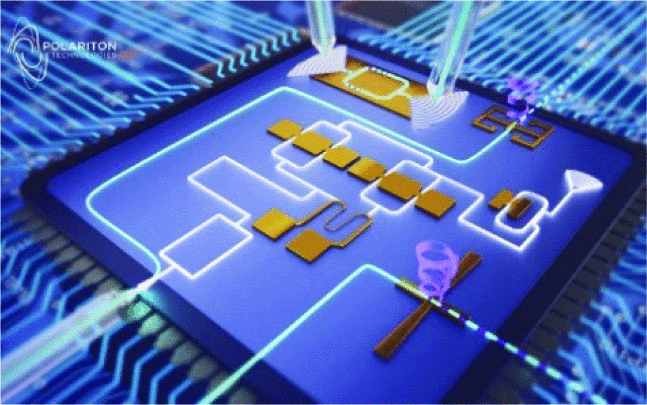A photonic integrated circuit (PIC) is a chip that contains optical functions. PICs are essential to the current and future digital economy—from data communications and sensing to quantum technologies. Integrated photonics provides an energy-efficient way to increase the speed and capacity of data networks, reduce costs, and meet needs across various industries. Fitted with the right building blocks, such chips can efficiently realize complex photonic system on chips (SoCs).
While there have been many research efforts for various applications, the main commercial driver of PICs today is optical communications. In a paper presented at the 2023 Optical Fiber Communications Conference, researchers review the technology and processes for photonic integrated circuits on silicon photonics. The paper focuses on system on chips in applications for optical communications, sensing and quantum technologies, and outlines the role of plasmonics in silicon photonics.
Photonic Integrated Circuits Challenges
In practice, photonic integrated circuits face significant challenges:
- PICs are based on demanding manufacturing processes.
- Today’s PICs cannot yet deliver the performance (speed, size, and efficiency) required for upcoming applications.
- Besides optical communications, few applications that require large-scale integration have been identified.
According to the authors, PIC technologies have matured rapidly in recent years, driven by the cost-effective manufacturability and applications in optical communications. However, the community must rapidly scale complexity and develop new building blocks (BBs) to realize practical photonic SoCs. For example, a simple optical communication system requires lasers, phase shifters, modulators, waveguides, and photodetectors. The BBs are the toolkit for the development of PICs. PIC designers can choose various functions from process design kits (PDKs) to build integrated circuits by optical routing.
The Evolution of High-End PICs and Plasmonics
The complexity of PICs will grow over the years, but shrinking photonic components is not possible due to the diffraction limit of light. With increasing complexity, PIC chip sizes are at risk of increasing drastically, along with exploding costs, since chip designers pay per wafer area. The focus on developing plasmonic PICs that are fundamentally smaller than conventional PICs will enable complex optical functionality on a compact footprint. Plasmonic PICs can be seamlessly integrated into the existing silicon photonics platform, enabling a broad range of applications.

Vision of Plasmonic PICs that enable complex optical functionality on a compact footprint.
The authors discuss Plasmonic PICs applications in sensing and quantum technologies, as well as hybrid integration:
- Given the compactness of Plasmonic PICs sensors, one can foresee a chip capable of containing dozens or hundreds of them. In the future, electronic intelligence might be included to create intelligent sensor networks.
- Photonic communication links are of particular interest to allow for the efficient scaling of quantum computers. The research team recently demonstrated the cryogenic operation of a plasmonic modulator as an energy-efficient and scalable interface for quantum systems.
- Whether electronic ICs and PICs should be on the same wafer is primarily a question of costs and time to market. The feature size mismatch between electronic ICs and PICs drives the use of different nodes and hybrid integration.
Looking Forward
Silicon photonics is growing rapidly, with plasmonics playing an important role. The transformation of silicon photonics from a promising research field to commercial success has been fueled by the potential for lower cost and size due to high-volume production and semiconductor integration technology. Manufacturing processes and performance will continue to improve and allow for complex SoCs to be used in more and more applications.
Interested in acquiring full-text access to this collection for your entire organization? Request a free demo and trial subscription for your organization.




